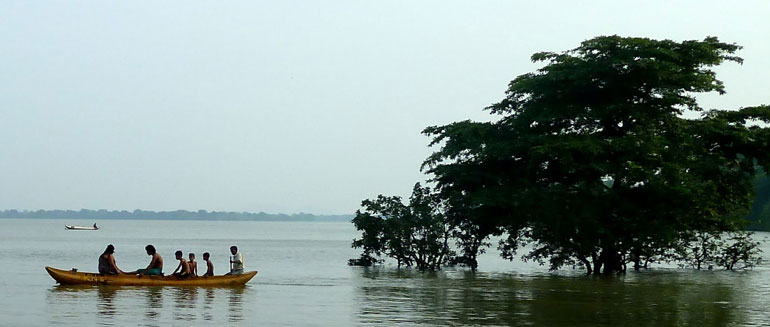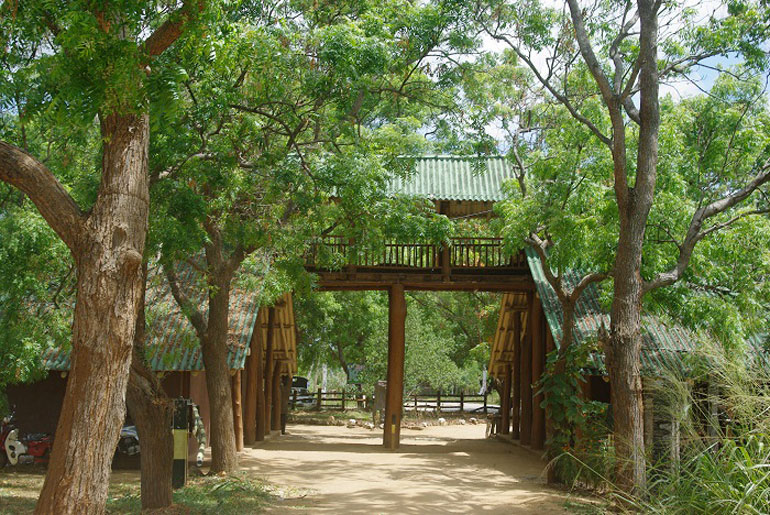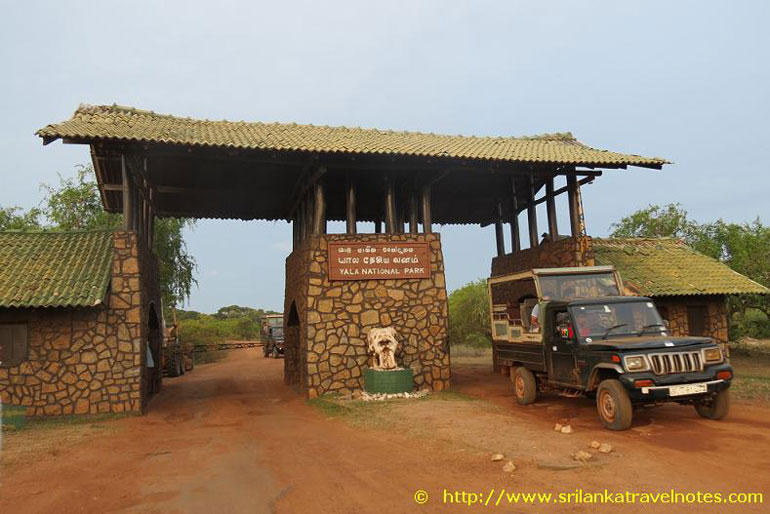Wednesday Apr 24, 2024
Wednesday Apr 24, 2024
Saturday, 10 October 2015 00:10 - - {{hitsCtrl.values.hits}}

Kalaveva and Balaluveva are major irrigation tanks with a cherished history dating back to the 5th century
By D.C. Ranatunga
Two more national parks are to be opened next week. They are both on the banks of major irrigation tanks with a cherished history dating back to the 5th century. One is Kalaveva and the other is Balaluveva. Both were built by King Dhatusena (455-73 CE) when hydraulic technology was at its peak in the Anuradhapura period.
Presently the area is reported to have a high density of flora and fauna and is fast becoming a tourist attraction. The banks have become home to large herds of elephants which possibly is the biggest attraction for tourists. Such herds can be seen at the Minneriya tank which has also attracted both local and foreign tourists in large numbers.
Kalaveva has had an embankment 3.25 miles long and rising to a height of about 40 feet. Professor K.M. de Silva states in ‘A History of Sri Lanka’ that its bund was constructed of blocks of dressed granite morticed together to enable a very close fitting. Through a canal 50 miles in length – the Jayaganga/Yoda Ela – its waters augmented the supply in tanks in Anuradhapura and its environs such as Tissaveva, apart from irrigating an area of about 180 square miles. This canal is an amazing technological feat, for the gradient in the first 17 miles of its length was a mere six inches to a mile, according to historian Professor Leslie Gunawardane.
Balaluveva is close to the Kalaveva and the two had been connected both providing water to the other Anuradhapura tanks.
With the decline of the Sinhalese monarchies the tanks, the Buddhist shrines, the royal palaces were all either destroyed or neglected and the once prosperous kingdoms in the Rajarata became ruined cities.
The credit of renovating the ancient irrigation tanks goes to British Governor, Sir William Henry Gregory (1872-77), who, in fact, created a new province – the North Central Province (NCP) – incorporating the Nuvarakalaviya (from the Northern Province), Tamankaduwa (from the Eastern Province) and the Demala Hatpattu (from the North Western Province) when saw the potential in turning a wilderness into a prosperous agricultural colony. Kalaveva alone was expected to irrigate 23,000 acres of land and its renovation turned out to be a mammoth task. There was a formidable enemy to defeat too in the form of malaria.
“The wretched, half-starved, dying-out population was now plum, well-fed, sleek, healthy and well-to-do from the spread of irrigation,” Governor Gregory wrote in his Autobiography (1894). “Never was a great social experiment more speedily and entirely successful.”
The opening of the two new wild life parks will increase the total of the parks to 24.

Horton Plains
Parks – the beginnings
The beginnings of national parks go back to the 1880s when during the British colonial administration, the Conservator of Forests, Colonel Clark pointed out the disastrous effects of the commercial exploitation of wildlife resources in the country, and urged the government to enact legislation which would forbid the destroying wild animals for the export of hides.
Early records mention that two stretches of uninhabited country – Yala (an area of 160 sq. miles between Menik Ganga and Kumbukkan Oya) and Wilpattu (an area of 256 sq. miles in the North-Western and North Central Provinces) were proclaimed as Reserves under the Forest Ordinance in 1900. They were declared National Parks on 25 February 1938. They remain the best-known and the most talked-about national parks to date.
The Wildlife Department was established in October 1949. The Conservator of Forests continued as the Acting Warden, until the new Wildlife Warden, C.W. Nicolas, was appointed on 1 October 1950.

Udawalawe National Park
Wilpattu – Land of the Lakes
Wilpattu literally means the ‘Land of Lakes’.
“A unique landscape composed of attractive high forest with tenacious lianas and thorny scrub interrupted Fairly regularly by expansive verdant plains and sooting sand-rimmed basins of water known as ‘villus’. A narrow gently winding road has been tunnelled through otherwise impenetrable scrub and copse to surface at ‘villu’ and glade and provide visitors their thrills not all at once as in Serengeti and Tsavo, but in series of surprises as only Wilpattu can boast of,” is how the Studio Times publication, ‘Handbook for the Ceylon Traveller’ introduces the Park.
The book lists out 40 major ‘villus’ and water-holes.
The Park is just 127 miles from Colombo on the Puttalam-Anuradhapura road turning off at the 28th milepost at Thimbiriwewa. It is hemmed in by two rivers – Modaragam Aru in the north and Kala Oya in the south – with the Indian Ocean in the west.
A total of 31 species of mammals has been recorded but additional species are also present. Reptiles are common. The country’s top predator, Sri Lankan leopard, sloth bear, barking deer and white-bellied sea eagle are among the most sought-after at Wilpattu.

Wilpattu National Park
Yala (Ruhuna National Park)
Situated in the south-east corner of Sri Lanka bordering the Indian Ocean, the Yala National Park is the second largest in the country. The area had initially been used as hunting ground for the elite during the colonial days.
With a combination of a strict natural reserve and a national park, it has a protected area of nearly 130,000 hectares of land consisting of light forests and vast expanses of open terrain with grasslands and scrubs, tanks and lagoons, water holes and sand dunes. Divided into five blocks, Yala is home to 44 varieties of mammal and 215 bird species.
The world’s biggest concentration of leopards is found here along with the majestic elephant, sloth bear, jackal, spotted deer, peacock and crocodile. Wild boar, wild buffaloes and grey monkeys are a common sight. Apart from peacocks, Ceylon jungle fowl and ‘mal koha’ are found in large numbers. Among other birds are vultures, white-necked tern, black-necked stork and painted stork.
November to April is the migratory season for the birds when many come from Europe, Western Asia and India.

Yala National Park
Udawalawe Park
Udawalawe Park situated in the boundary of two districts – Moneragala in Uva Province and Ratnapura in the Sabaraganuwa Province – was created to provide a sanctuary for wild animals displaced by the construction of the Udawalawe reservoir on the Walawe ganga, as well as to protect the catchment of the reservoir.
Established on 30 June 1972, the reserve covers 30,821 hectares (119.00 sq mi) of land area and is a convenient 165 kilometres from Colombo along the Ratnapura highway turning right at Pelmadulla and proceeding to Timbulketiya and then up to the 11th milepost on the Thanamalwila road.
Udawalawe is an important habitat for Sri Lankan elephants, which are relatively easy to see in the open. Many elephants are attracted to the park because of the Udawalawe reservoir, with a herd of about 250 believed to be permanently resident
The Elephant Transit Home set up by the Department of Wild Life Conservation set up in October 1995 provides shelter, food and security for the destitute, wounded or motherless baby elephants until they are ready for release to the jungle.
Horton Plains
A protected area in the central highlands Horton Plains was first designated as a wildlife sanctuary on 5 December 1969 and because of its biodiversity value, was elevated to a National Park on 18 March 1988. The park is situated 32 kilometres (20 mi) from Nuwara Eliya and eight kilometres (five miles) from Ohiya.
Once known as Maha Eliya Tenna, the plateau has been ‘discovered’ in 1834 by Lt William Fisher of the 78th Regiment and Lt. Albert Watson of the 58th Regiment. Stone tools dating back to Balangoda culture have been found here. It was renamed after Governor Sir Robert Wilmot-Horton (1831-37), who travelled to the area to meet the Ratemahatmaya of Sabaragamuwa in 1836.
National parks in the different climate zones have been identified as follows:
Dry Zone: Angammedilla, Bundala, Flood Plains, Gal Oya, Kaudulla, Kumana, Lahugala Kitulana, Lunugamvehera, Maduru Oya, Minneriya, Somawathiya, Udawalawe, Ussangoda, Wasgamuwa, Wilpattu, Yala
Wet Zone: Galway’s Land, Horagolla, Horton Plains
Marine: Hikkaduwa, Pigeon Island